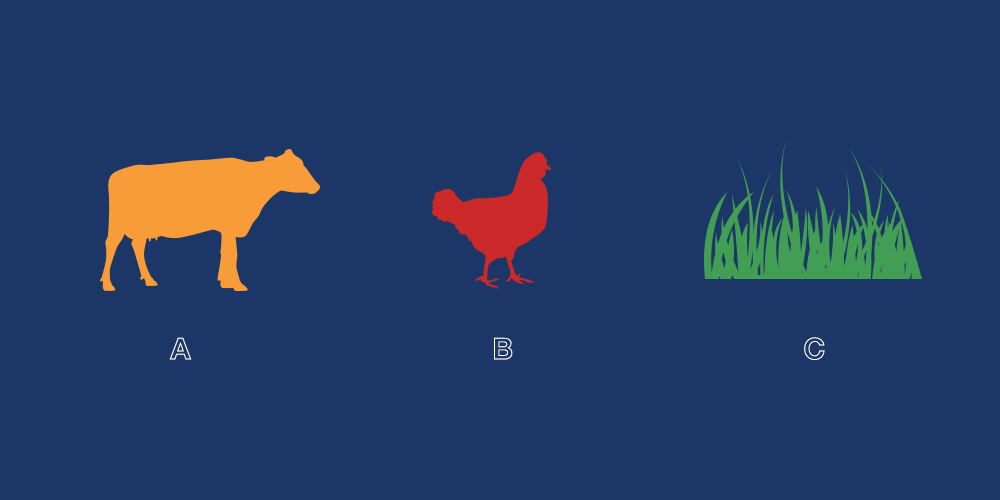Perception is the process of selecting, organizing, and interpreting information. This process includes the perception of select stimuli that pass through our perceptual filters, are organized into our existing structures and patterns, and are then interpreted based on previous experiences. Although perception is a largely cognitive and psychological process, how we perceive the people and objects around has an effect on our communication. We respond differently to an object or person that we perceive favorably than we do to something we find unfavorable. In this section, we discuss how we filter through the mass amounts of incoming stimuli we receive, organize it, and make meaning from it.

When you look at this image do you see a rabbit or a duck? The way we view our environment and the world around us varies from person to person; sometimes quite significantly. However, even if someone sees something differently than you, it doesn’t mean their perception is incorrect or not as valid as yours.
3.1.1: Selecting Information
We take in information through our senses, but our perceptual field (the world around us) includes so many stimuli that it is impossible for our brains to process and make sense of it all. So, as information comes in through our senses, various factors influence what actually continues on through the perception process (Fiske & Taylor, 1991). Selecting is the first part of the perception process, in which we focus our attention on certain incoming sensory information. We tend to pay attention to information that is salient. Salience is the degree to which something attracts our attention in a particular context. The thing attracting our attention can be abstract, like a concept, or concrete, like an object. The degree of salience depends on three factors: visual and aural stimulation, needs and interests, and expectations (Fiske & Tayor, 1991).
- Visual and Aural Stimulation: It is probably not surprising to learn that visually and/or aurally stimulating things become salient in our perceptual field and get our attention. Stimuli can be attention-getting in a productive or distracting way. Creatures ranging from fish to hummingbirds are attracted to things like silver spinners on fishing poles or red and yellow bird feeders. Having our senses stimulated isn’t always a positive thing though. Think about the couple that won’t stop talking during the movie or the upstairs neighbor whose subwoofer shakes your ceiling at night.
- Needs and Interests: We select and attend to information that meets our needs- whether a sign helps us find the nearest gas station, the sound of a ringtone helps us find our missing cell phone, or a speaker tells us how avoiding processed foods will improve our health. We also find salient information that interests us. Of course, many times, stimuli that meet our needs are also interesting, but it’s worth discussing these two items separately because sometimes we find things interesting that don’t necessarily meet our needs. I’m sure we’ve all gotten sucked into a television show or random project and paid attention to that at the expense of something that actually meets our needs like cleaning. In many cases we know what interests us and we automatically gravitate toward stimuli that match up with that. For example, as you filter through radio stations, you likely already have an idea of what kind of music interests you and will stop on a station playing something in that genre while skipping right past stations playing something you aren’t interested in.
- Expectations: The relationship between salience and expectations is a little more complex. Basically, we can find both expected and unexpected things salient. While this may sound confusing, a couple examples should illustrate this point. If you are expecting a package to be delivered, you might pick up on the slightest noise of a truck engine or someone’s footsteps approaching your front door. Since we expect something to happen, we may be extra tuned in to clues that it is coming. In terms of the unexpected, if you have a shy and soft-spoken friend who you overhear raising the volume and pitch of his voice while talking to another friend, you may pick up on that and assume that something out of the ordinary is going on. For something unexpected to become salient, it has to reach a certain threshold of difference. If you walked into your regular class and there were one or two more students there than usual, you may not even notice. If you walked into your class and there was someone dressed up as a wizard, you would probably notice. Now that we know how we select stimuli, let’s turn our attention to how we organize the information we receive.
 (Image: N.A. Naseer, CC BY-SA 2.5 IN)
(Image: N.A. Naseer, CC BY-SA 2.5 IN)
3.1.2: Organizing Information
Organizing is the second part of the perception process, in which we sort and categorize information that we perceive based on innate and learned cognitive patterns. Three ways we sort things into patterns are by using proximity, similarity, and difference (Coren, 1980).
- Proximity: In terms of proximity, we tend to think that things that are close together go together. For example, have you ever been waiting to be helped in a business and the clerk assumes that you and the person standing beside you are together? Even though you may have never met that other person in your life, the clerk used a basic perceptual organizing cue to group you together because you were standing in proximity to one another.
- Similarity: We also group things together based on similarity. We tend to think similar-looking or similar-acting things belong together. For example, if you were out with a friend who was around the same height, had the same skin color, and same hair color, people might assume you are related.
- Difference: We also organize information that we take in based on difference. In this case, we assume that the item that looks or acts different from the rest doesn’t belong with the group. For example, let’s say a group of five people were standing in line at the movies and four of the people were wearing casual jeans and t-shirts, and the fifth person a business suit. You might assume the person dressed in the suit was not in the same group as those dressed in jeans and t-shirts.

One way we organize information is by difference, which means that when something looks different from what is around it, we assume it doesn’t go together
We simplify information and look for patterns to help us more efficiently communicate and get through life. Simplification and categorizing based on patterns isn’t necessarily a bad thing. In fact, without this capability we would likely not have the ability to speak, read, or engage in other complex cognitive/behavioral functions. Our brain innately categorizes and files information and experiences away for later retrieval, and different parts of the brain are responsible for different sensory experiences. In short, it is natural for things to group together and looking for patterns helps us in many practical ways.
However, it is important to note that the judgments we place on various patterns and categories are not natural; they are learned and culturally and contextually relative. For example, a famous study conducted by Liang-Hwang Chiu (1972), presented Chinese and U.S. American children with three objects- a chicken, cow, and grass- and asked them to group the two objects that went together. Most of the U.S. American children chose the chicken and cow, citing they were both animals. However, most of the Chinese children choose cow and grass, stating that cows eat grass. The reasons for this have been explained by differences in cultural backgrounds which cultivate different cognitive styles. White explains that “East Asians are typically oriented toward interdependence, harmony, and relatedness. Westerners are typically oriented toward independence. Interdependent persons think about objects in relation to context, whereas independent persons tend to focus on categories that share properties such as ‘animal-ness.’” (2011, para 5).

3.1.3: Interpreting Information
Although selecting and organizing incoming stimuli happens very quickly, and sometimes without much conscious thought, interpretation can be a much more deliberate and conscious step in the perception process. Interpretation is the third part of the perception process, in which we assign meaning to our experiences using mental structures known as schemata. Schemata are like databases of stored, related information that we use to interpret new experiences. We all have fairly complicated schemata that have developed over time as small units of information combine to make more meaningful complexes of information. We have an overall schema about education and how to interpret experiences with teachers and classmates. This schema started developing before we even went to preschool based on things that parents, peers, and the media told us about school. For example, you learned that certain symbols and objects and concepts like a calculator, notebook, recess, and grades are associated with being a student or school. As you progressed through your education, your schema adapted to the changing environment.
How smooth or troubling schema reevaluation and revision is varies from situation to situation and person to person. For example, some students adapt their schema relatively easily as they move from elementary, to middle, to high school, and on to college and are faced with new expectations for behavior and academic engagement. Other students don’t adapt as easily, and holding onto their old schema creates problems as they try to interpret new information through old, incompatible schema.
Schemata guide our interactions, providing a script for our behaviors. We know, in general, how to act and communicate in a waiting room, in a classroom, or on a first date. It’s important to be aware of schemata because our interpretations also affect our behavior towards others. For example, if you are doing a group project for class and you perceive a group member to be shy based on your schema of how shy people communicate, you may avoid giving him presentation responsibilities in your group project because you do not think shy people make good public speakers.
Schemata are also used to interpret others’ behavior and form impressions about who they are as a person. To help this process along, we often solicit information from people to help us place them into a preexisting schema. In the United States and many other Western cultures, people’s identities are often closely tied to what they do for a living. When we introduce others, or ourselves, occupation is usually one of the first things we mention. Think about how your communication with someone might differ if he or she were introduced to you as an artist versus a doctor. We make similar interpretations based on where people are from, their age, their race, and other social and cultural factors.

Schema is plural for schemata
In summary, we have schemata about individuals, groups, places, and things, and these schemata filter our perceptions before, during, and after interactions. As schemata are retrieved from memory, they are executed, like computer programs or apps on your smartphone, to help us interpret the world around us. Just like computer programs and apps must be regularly updated to improve their functioning, competent communicators update and adapt their schemata as they have new experience; being able to adapt our schemata is a sign of cognitive complexity, which is an important part of communication competence.